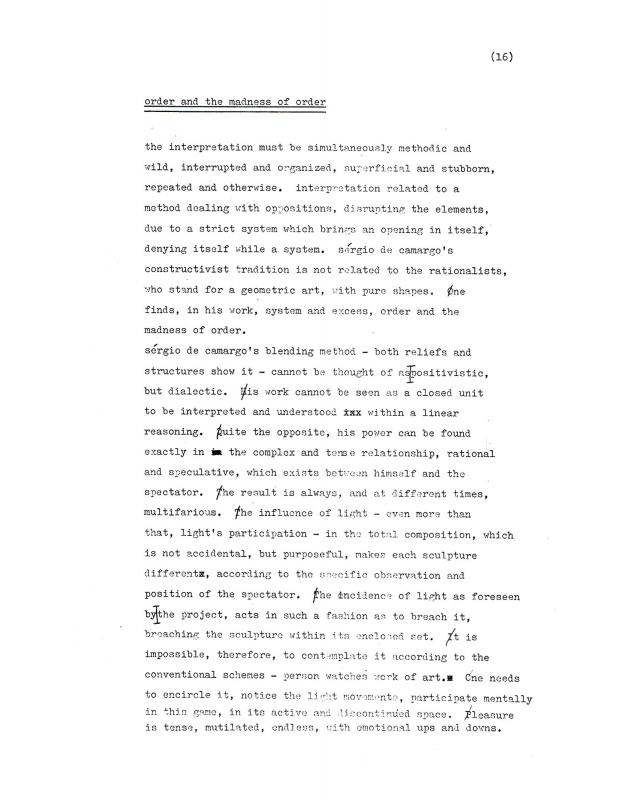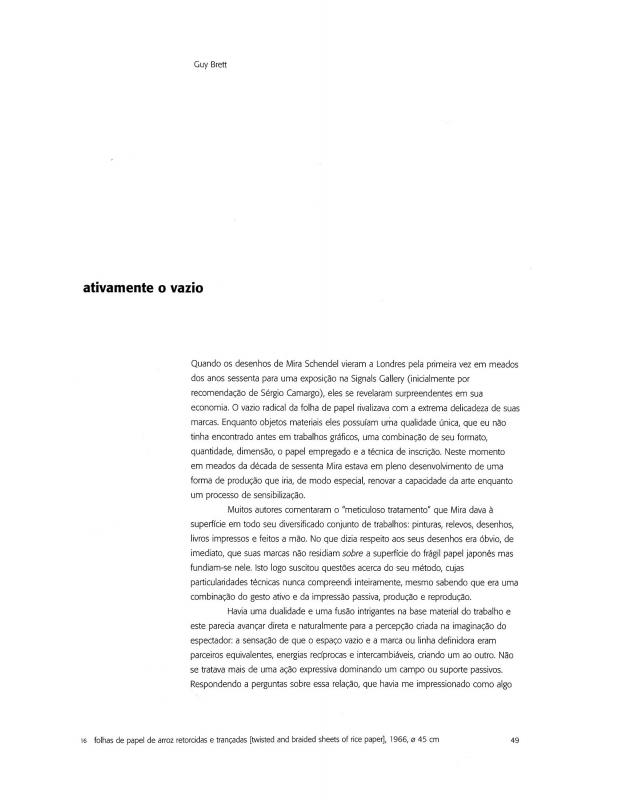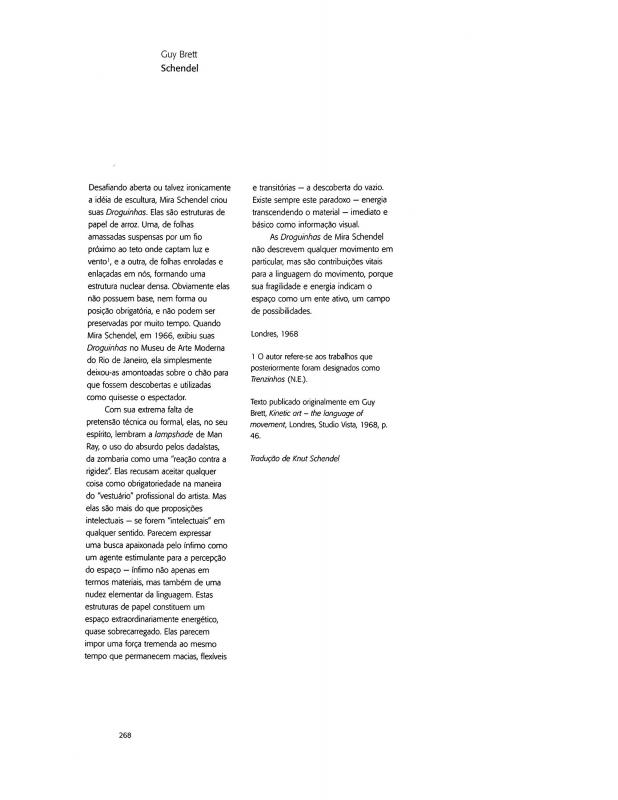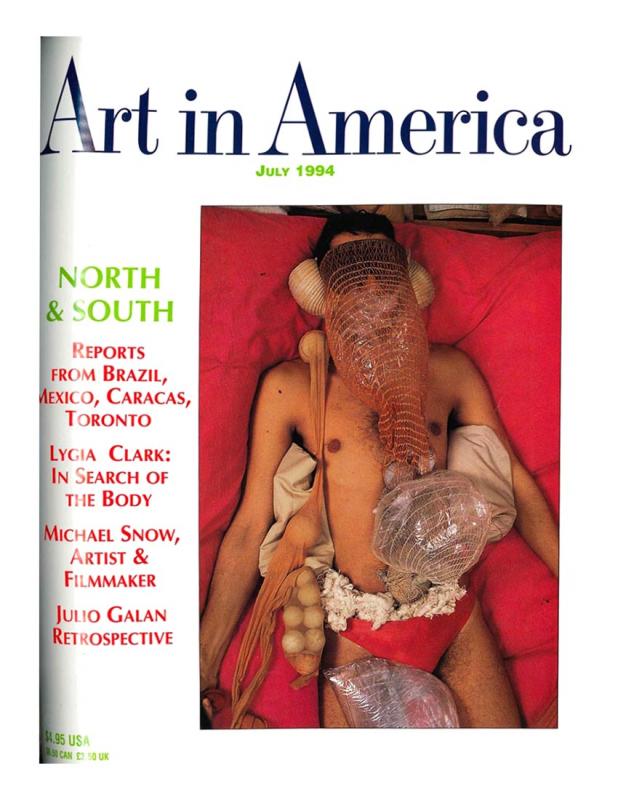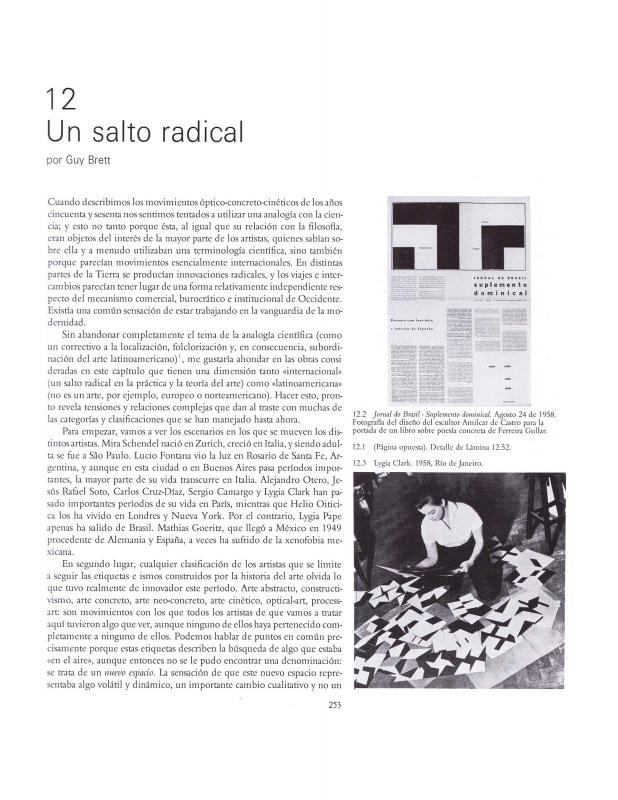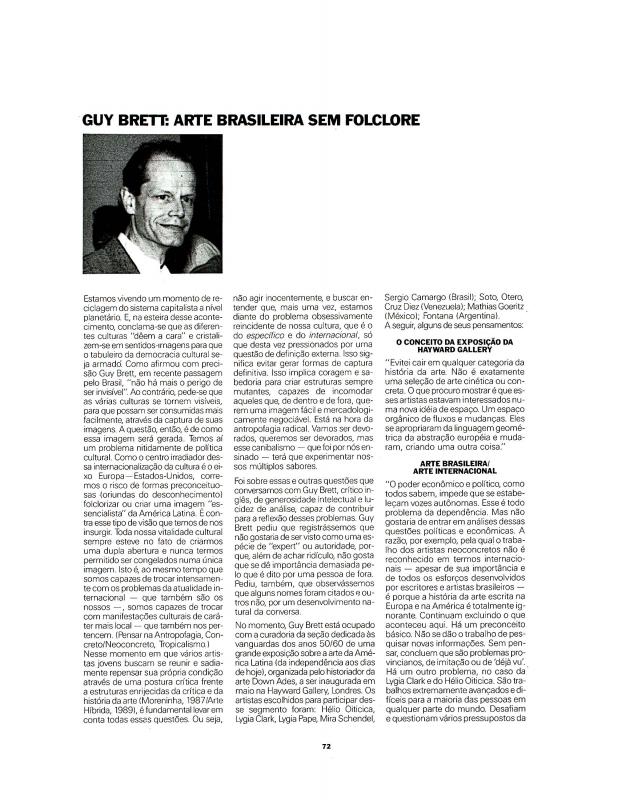This article about the work of Sérgio [de] Camargo (1930-1990) was published in 1965 in Signals Newsbulletin, the London magazine. Brett used the pseudonym Gerald Turner to sign the articles he published in that important experimental forum devoted to art in the 1960s, writing mainly about Kinetic art and the exchange of values between European and Latin American artists. He met Camargo for the first time the previous year, 1964, in Paris. He took an interest in the Brazilian artist’s career, especially with regard to his transition from three-dimensional sculpture to his “relêvos brancos” (white reliefs), and the dialogue between observer/work that ensued (see “Sergio Camargo: Luz e Sombra” [doc. no. 1232285]).
In Brazil, the critic Ronaldo Brito analyzes what he calls Camargo’s “relêvos moleculares” (molecular reliefs) in an essay called “Order and the Madness of Order” [doc. no. 1110496].
Based in London, the critic Guy Brett (b. 1942) is also a curator and a lecturer on the international circuit. He cofounded a magazine (Newsbulletin of Signals) and a gallery in London together with Paul Keeler, also called Signals. He worked with Mira Schendel to present her solo exhibition at Signals in 1966. Brett has regularly published his essays, which are almost always based on radical or experimental ideas, in international art magazines, and he is the author of a number of monographs. His major contributions include his involvement with Kinetic art from its earliest days in Europe and Venezuela. His best-known books are: Kinetic Art: The Language of Movement (London: Studio Vista, 1968); Force Fields: Phases of the Kinetic (London: Hayward Gallery, 2000); Carnival of Perception: Selected Writings on Art (London: Institute of International Visual Arts, 2004); and in this specific context, Brasil experimental - arte/vida: proposições e paradoxos (org. Kátia Maciel) (Rio de Janeiro: Contra Capa Livraria, 2005).
For a broader view of Brett’s thoughts on Brazilian art, see “Uma cronologia de encontros, 1964-2005” [doc. no. 1111303]. The British critic has published a number of monographs about Brazilian artists. On the subject of Mira Schendel’s radical work, Brett wrote “Ativamente o vazio” [doc. no. 1111214] and Schendel” [doc. no. 1111213]; on the subject of Lygia Clark’s innovations, “In Search of the Body” [doc. no. 1232526]; on his reading of the 1950s and 1960s in Brazil, “Un salto radical” [doc. no. 808389]; and finally, his testimony on the art of the 1970s in Brazil, gathered by Márcio Doctors, “Guy Brett: arte brasileira sem folclore” [doc. no. 1110958].

